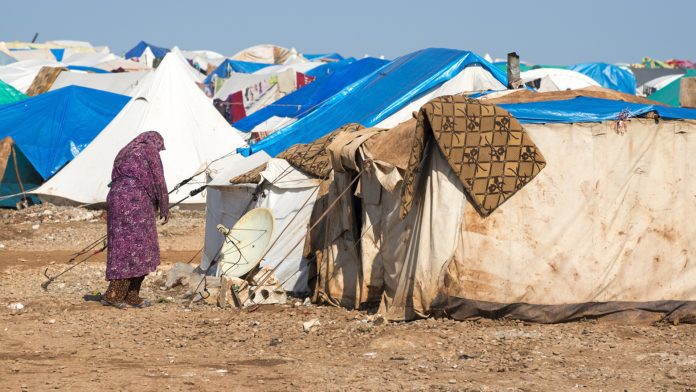
The effects of climate change are creating health threats for thousands of migrants in overcrowded and polluted refugee camps, according to a study from the University of Birmingham.
The effects of climate change, combined with overcrowding, have made it difficult for humanitarian organisations to provide safe and healthy conditions for refugees.
Many refugee camps are situated in disaster-prone or climate-hotspot areas, increasing pressure on water, sanitation, and hygiene resilience (WaSH), which in turn leads to the overexploitation of resources.
These effects result in depleted groundwater, polluted surface water, changes in river dynamics, and can lead to wastewater being discharged into rivers.
Understanding the barriers to WaSH
Researchers from the University of Birmingham have identified three key barriers to the sustainability of WaSH in refugee camps:
- Environmental health is not widely considered.
- System-wide sustainability pre-planning in access and service quality in camps is absent.
- The impact of interrelated ecological, institutional, and cultural factors is not considered.
Refugee camps are often located in developing countries which are most exposed to the effects of climate change. The camps are considered temporary shelters used before a long-term viable solution to the displacement of the refugees has been secured.
“People living in camps often lack safe access to clean water or have a shared toilet system and the health of many is already stressed from water-borne diseases, such as cholera and diarrhoea. Public health-related impacts from natural climate disasters or man-made hazards in often-overcrowded refugee camps are more devastating than in any other setting if not prepared for or mitigated through sustainability planning,” said Professor Iseult Lynch of the University of Birmingham.
The health effects of climate change could become even worse
The researchers found that many camps have been operating without effective solutions to these issues for decades. They fear that further difficulties in providing access to WaSH services could be on the horizon due to ageing infrastructure, the sudden onset of climate-related disasters and maintenance shortages.
An estimated one million migrants can be accommodated in just four large refugee camps. Almost 86% of the estimated 82.4 million displaced people are living in developing countries, with 65% of camps being in climate hotspots.
“By 2050, there could be more than 200 million environmental refugees globally due to the impacts of climate change such as sea-level rise, water security issues, and increased drought/flooding and extreme weather events,” said Tahmina Yasmin, Postdoctoral Research Fellow at the University of Birmingham.
“Long-term provision for climate refugees must be considered, through a system governance approach, to prevent repeated cycles of displacement for the most vulnerable of our fellow humans – as has just happened to refugees in camps in Pakistan.”
Refugee camps are designed to meet people’s most basic needs – food, water, shelter, and medical treatment. The researchers believe that adopting the United Nations High Commissioner for Refugees (UNHCR) approach of ‘alternatives to camps’ will help alleviate the health effects of climate change in refugee camps. This approach involves integrating refugees with the community upon arrival or as soon as possible.
The researchers do accept that ‘alternatives to camps’ are complicated and can require years of strategic planning and facilitation by host countries to achieve positive results.
“Ensuring provision of the basic services such as WaSH to camps and securing the sustainability of these services is critical but must be done in such a way that benefits the surrounding local communities,” said Professor Stefan Krause, from the University of Birmingham.
“Given that camps are home to growing numbers of displaced people, typically in areas that have major infrastructure and poverty challenges, it is vital that ‘alternatives to camps’ are made viable as a matter of urgency through humanitarian organisations and human rights groups developing coherent policies,” he concluded.








